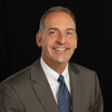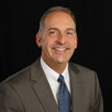How to Improve Your Odds of Success at Investing
Only 17% of stock mutual funds beat their benchmarks, but you can do better by keeping fees down and diversifying.

If I were to offer you the chance to wager $25,000 to win $150,000, with the caveat that if you lose, you end up with nothing, would you take the bet? And what if I told you the odds of winning were only 17%, or a one-in-six chance?
Let's up the stakes: What if you were just diagnosed with a serious illness, and the doctor tells you there is a 17% chance that a new treatment would help you, but it could kill you in the process? Would you try the treatment?
One in six—that's effectively a roll of the die, and the chance that any one number will show up in the roll. Not the greatest odds, is it? And yet, those are the odds that many investors take every single day. They bet on the manager of their mutual fund beating their benchmark, and sometimes they are willing to pay exorbitant fees to do so.
From just $107.88 $24.99 for Kiplinger Personal Finance
Become a smarter, better informed investor. Subscribe from just $107.88 $24.99, plus get up to 4 Special Issues

Sign up for Kiplinger’s Free Newsletters
Profit and prosper with the best of expert advice on investing, taxes, retirement, personal finance and more - straight to your e-mail.
Profit and prosper with the best of expert advice - straight to your e-mail.
In a recent study by Dimensional Fund Advisors, "Outsmarting Other Investors is Tough," it was found that only 17% of stock mutual funds beat their benchmarks after 15 years. And it's even worse for bond funds, of which only 7% outperform their benchmarks in the same timeframe.
From my perspective, it is fairly routine when a new client brings their statement to our first meeting, and it is full of costly and underperforming mutual funds. The worst offenders are clients investing with the banks and wire house brokerage firms, which tend to not place much importance on cost structures, and also tend to be swayed by slick presentations and back-channel compensation schemes from the fund families.
The situation is even worse for participants in 401(k) and 403(b) plans as this is where much of the poor advice has been hiding for decades.
6 Ways to Do Better
How can the average investor or retirement plan participant improve the odds for themselves? Here are a few pointers:
1. Realize that only one out of six mutual funds earns their management fees. Reduce your reliance on these poor odds by using low-cost, low-turnover solutions—preferably index-like mutual funds with a relatively low focus on active management. Look at fund families such as Dimensional Fund Advisors (who only work with a select group of advisory firms), Vanguard, T. Rowe Price and other no-load fund families.
2. Hire a fee-only objective adviser to help you sort through your holdings, provide recommendations and monitor them.
3. Keep a low percentage of your assets in "wager" investments, such as a new company or another unproven idea that you'd like to take a chance on. It's okay if you want to experiment a little, after doing thorough research, but don't stake your retirement on it.
4. Get objective advice on your employer's retirement plan holdings. Unfortunately, most participants in the health care, education or corporate sectors don't have much say in the choices offered by the plan. However, there are some great screening tools available that some professional advisers have access to that will help you make the best decision among the choices you have.
5. If you have a large enough portfolio, consider putting together a diversified basket of high-quality stocks and holding them for a very long time. Studies have shown that a portfolio of 10 to 15 stocks from different industries can mitigate unsystematic (non-market) risk adequately enough. You don't necessarily need to own shares of thousands of different companies.
6. Ignore fund company advertising. Do your own research, or again, get help from a fiduciary adviser.
At my firm, we have used a reliable third-party fiduciary screening service for more than ten years (hint, it's not Morningstar). The process identifies 11 key characteristics that indicate how well a particular fund adheres to best-practice fiduciary standards. It stands to reason that high fiduciary rankings generally improve your odds of outperformance. If you would like a copy of my checklist of these 11 criteria along with the latest fiduciary ranking of fund families, I'd be happy to send it to you.
Doug Kinsey is a partner in Artifex Financial Group, a fee-only financial planning and investment management firm based in Dayton, Ohio.
Profit and prosper with the best of Kiplinger's advice on investing, taxes, retirement, personal finance and much more. Delivered daily. Enter your email in the box and click Sign Me Up.

Doug Kinsey is a partner in Artifex Financial Group, a fee-only financial planning and investment management firm in Dayton, Ohio. Doug has over 25 years experience in financial services, and has been a CFP® certificant since 1999. Additionally, he holds the Accredited Investment Fiduciary (AIF®) certification as well as Certified Investment Management Analyst. He received his undergraduate degree from The Ohio State University and his Master's in Management from Harvard University.